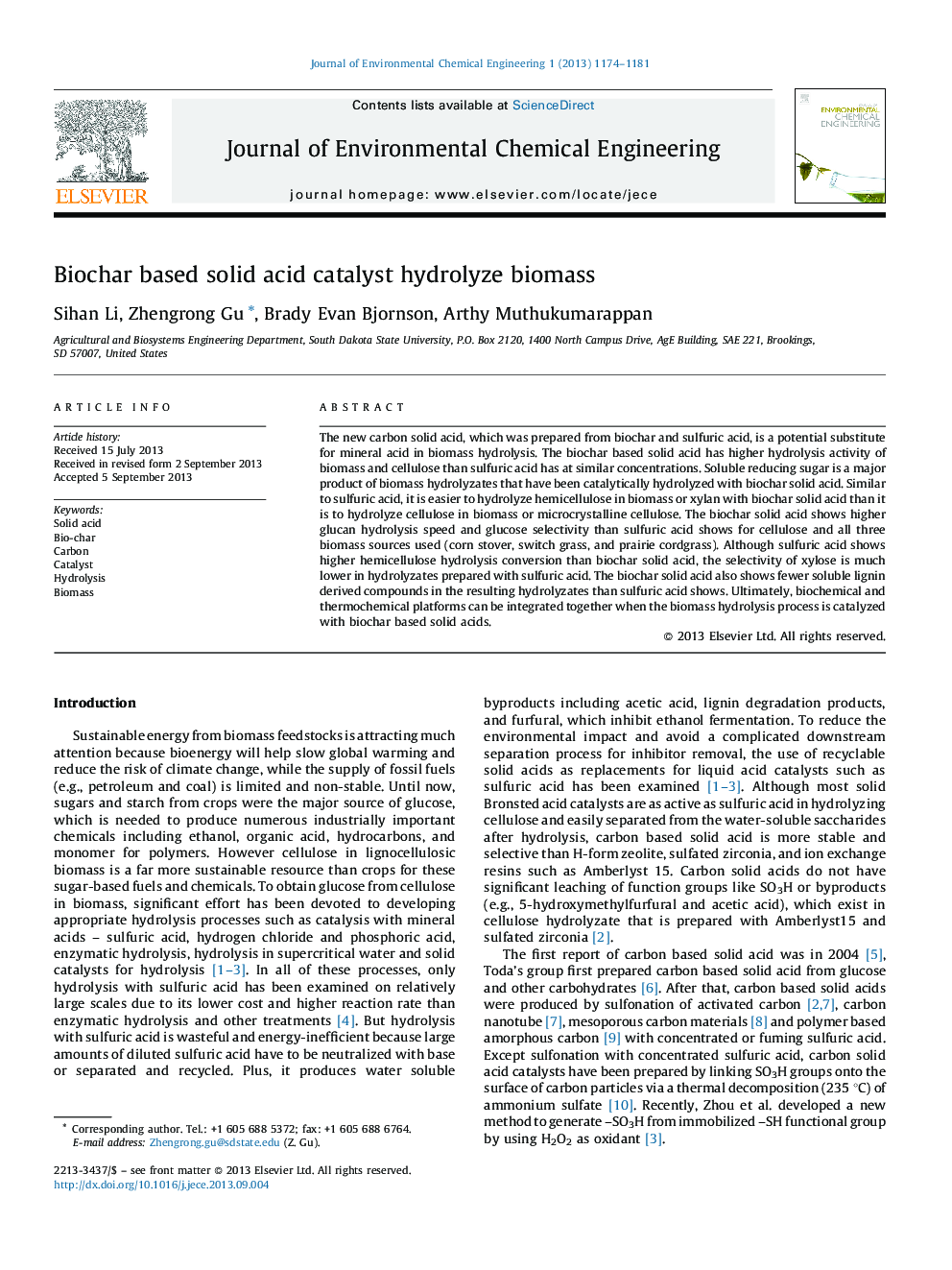| Article ID | Journal | Published Year | Pages | File Type |
|---|---|---|---|---|
| 222517 | Journal of Environmental Chemical Engineering | 2013 | 8 Pages |
The new carbon solid acid, which was prepared from biochar and sulfuric acid, is a potential substitute for mineral acid in biomass hydrolysis. The biochar based solid acid has higher hydrolysis activity of biomass and cellulose than sulfuric acid has at similar concentrations. Soluble reducing sugar is a major product of biomass hydrolyzates that have been catalytically hydrolyzed with biochar solid acid. Similar to sulfuric acid, it is easier to hydrolyze hemicellulose in biomass or xylan with biochar solid acid than it is to hydrolyze cellulose in biomass or microcrystalline cellulose. The biochar solid acid shows higher glucan hydrolysis speed and glucose selectivity than sulfuric acid shows for cellulose and all three biomass sources used (corn stover, switch grass, and prairie cordgrass). Although sulfuric acid shows higher hemicellulose hydrolysis conversion than biochar solid acid, the selectivity of xylose is much lower in hydrolyzates prepared with sulfuric acid. The biochar solid acid also shows fewer soluble lignin derived compounds in the resulting hydrolyzates than sulfuric acid shows. Ultimately, biochemical and thermochemical platforms can be integrated together when the biomass hydrolysis process is catalyzed with biochar based solid acids.
